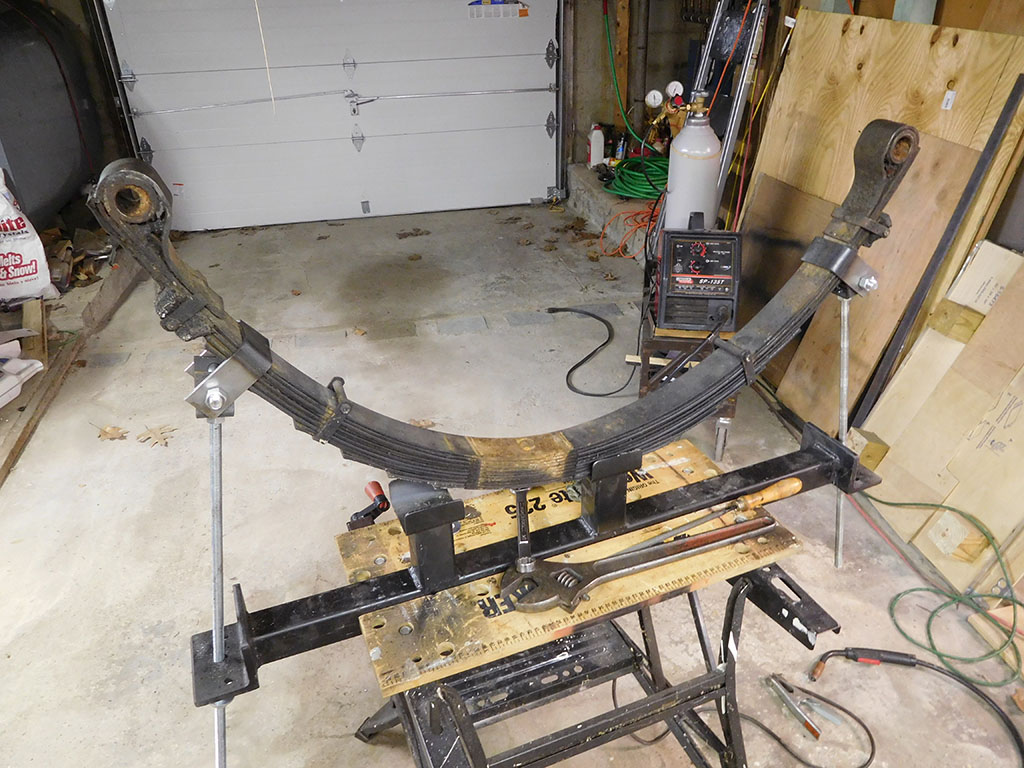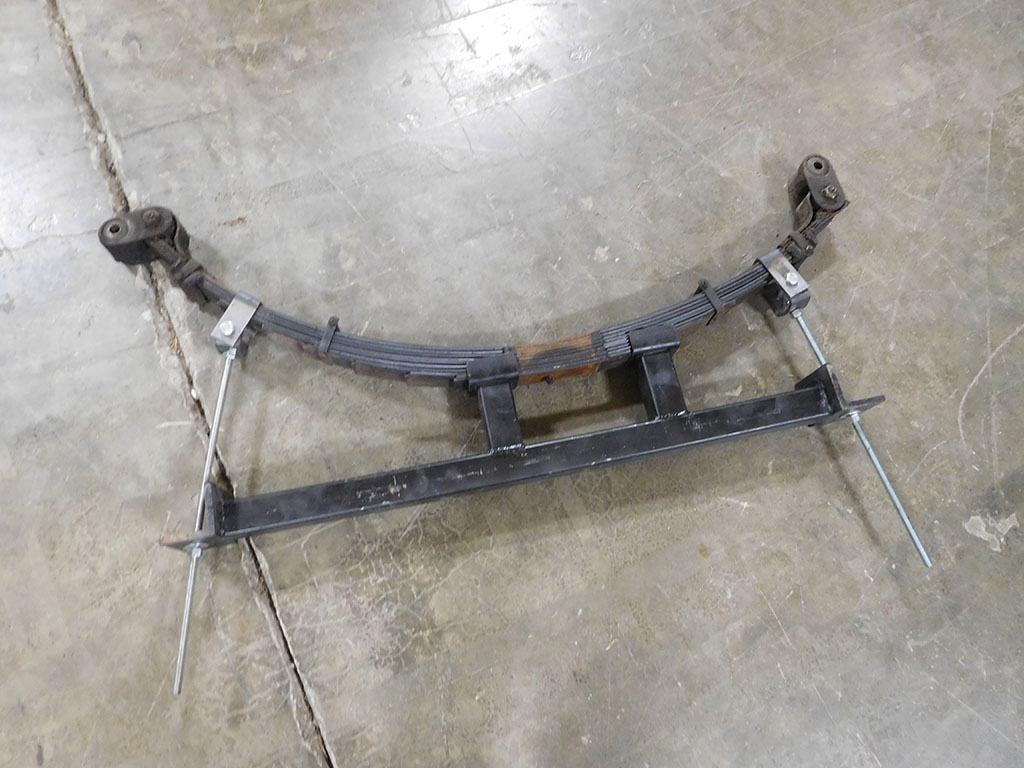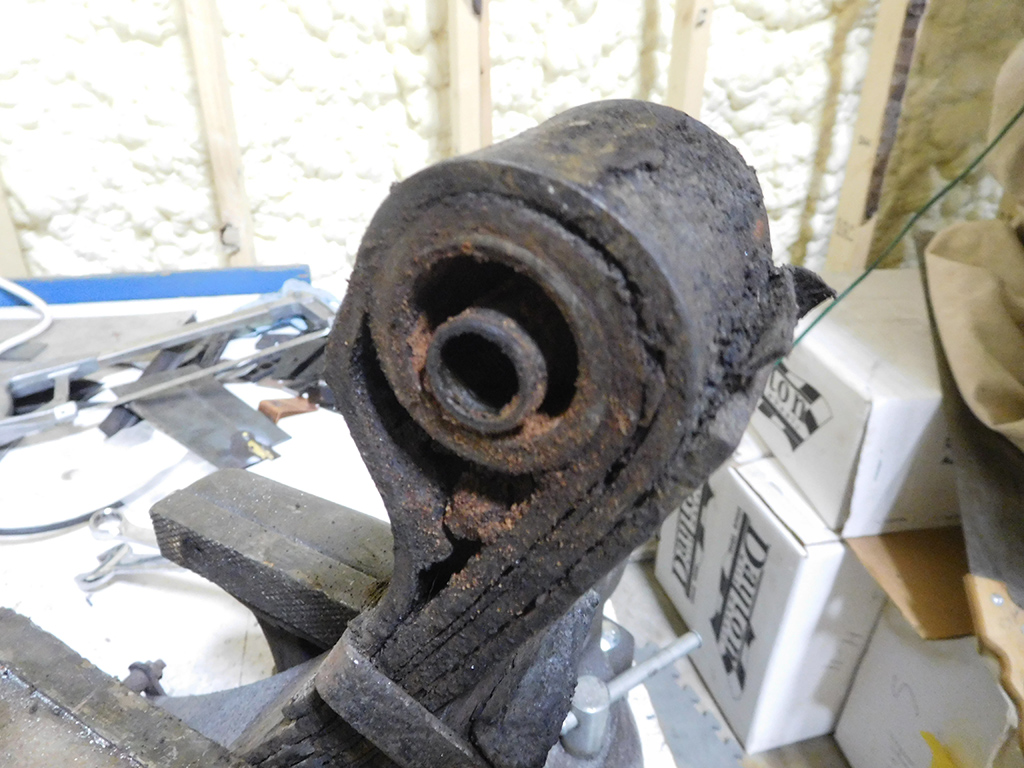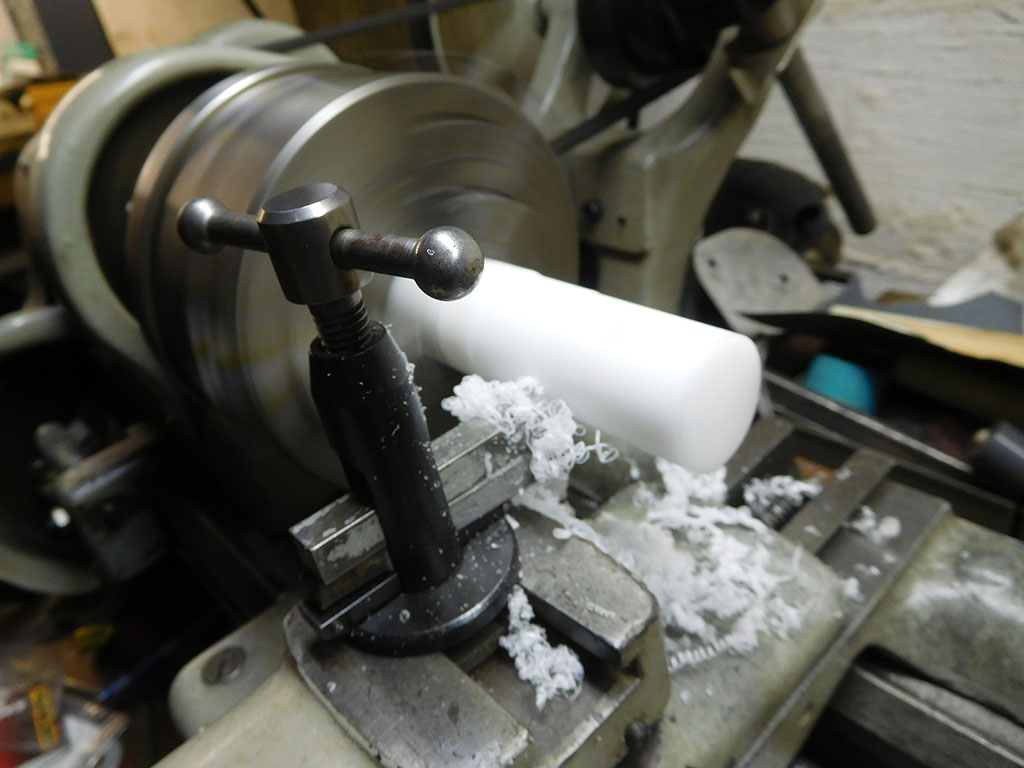GTE Rear Springs
One of the hardest things to wrestle with on a Vintage Ferrari is the leaf springs. Ferrari springs will contract into the shape of “U” when not in tension, so in order to remove or install them on a car, the leaf spring assembly has to be flattened out. I’ve always wanted to build a stronger and safer spring tool, so I started with a design a friend of mine started. I modified the way it attached to the spring, but we’ll see how well it works.
I first used my new spring tool to tension the right spring to remove it from the car. I took the left one out without the tool, but found there was still enough tension in the spring to make removal a little dangerous. Using my new spring tool made removing the right spring with a lot less drama!
The leaf springs have two pivoting shackles that need to be oriented properly so the car’s ride height is correct. Getting the springs tensioned, attached to the axle, and then securing it in place will be the next step.
Before I put the springs back, I’ll first have to address the spring eye bushings. As I mentioned before, Ferrari used a very soft material to allow the spring to pivot at this joint, but without grease, and the passage of time, this material wore away to dust. With this much play in the rear suspension, it can definitely affect the way the car handles. Almost every car I’ve seen from this era has worn rear bushings. If you look carefully up at the ends of the springs, you’ll be able to see how misaligned the spring is from this worn bushing.
I’ll be making replacement bushings out of “Delrin” that’s impregnated with teflon. This modern material is harder than the original material, but much more durable and won’t need much lubrication for a much longer service life.









